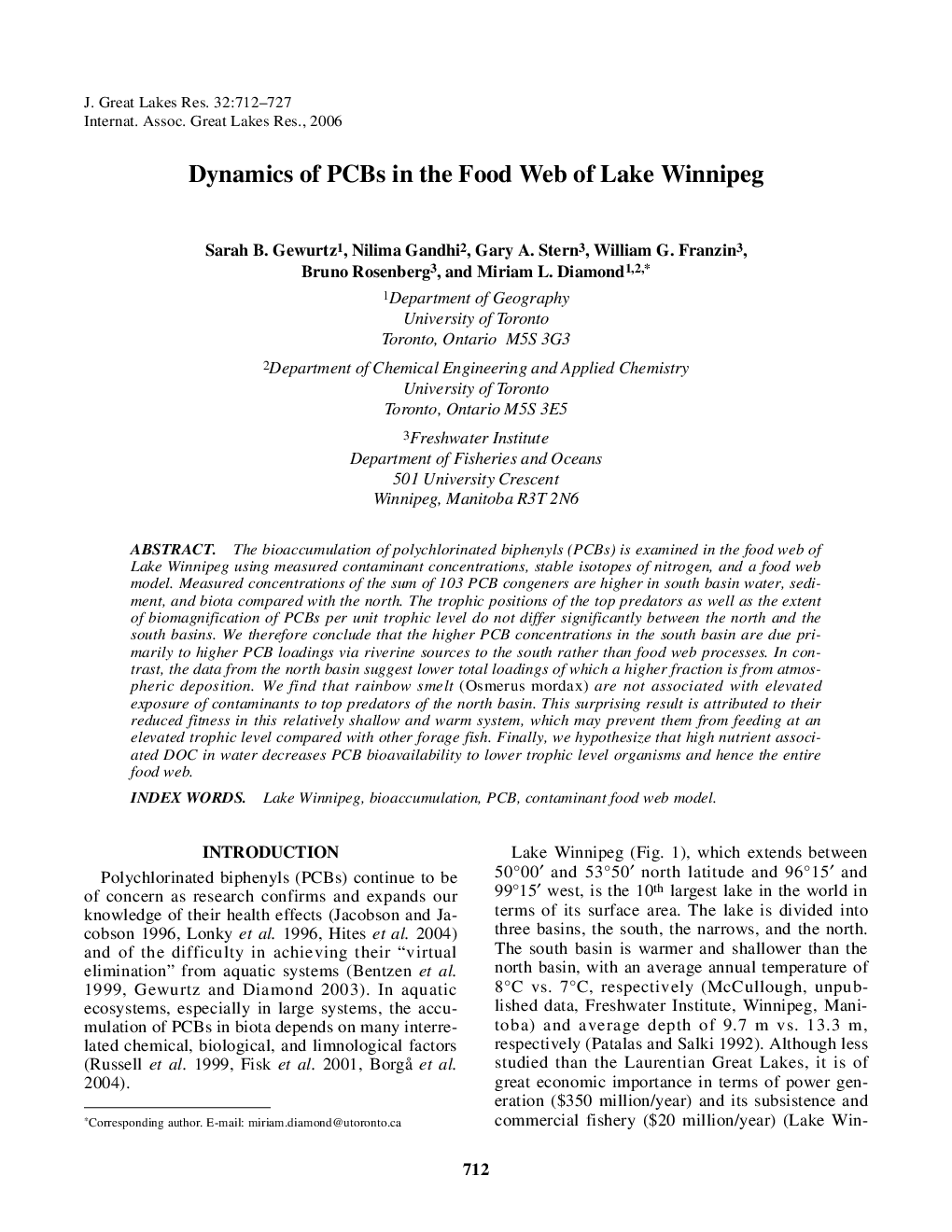| Article ID | Journal | Published Year | Pages | File Type |
|---|---|---|---|---|
| 4398767 | Journal of Great Lakes Research | 2006 | 16 Pages |
Abstract
The bioaccumulation of polychlorinated biphenyls (PCBs) is examined in the food web of Lake Winnipeg using measured contaminant concentrations, stable isotopes of nitrogen, and a food web model. Measured concentrations of the sum of 103 PCB congeners are higher in south basin water, sediment, and biota compared with the north. The trophic positions of the top predators as well as the extent of biomagnification of PCBs per unit trophic level do not differ significantly between the north and the south basins. We therefore conclude that the higher PCB concentrations in the south basin are due primarily to higher PCB loadings via riverine sources to the south rather than food web processes. In contrast, the data from the north basin suggest lower total loadings of which a higher fraction is from atmospheric deposition. We find that rainbow smelt (Osmerus mordax) are not associated with elevated exposure of contaminants to top predators of the north basin. This surprising result is attributed to their reduced fitness in this relatively shallow and warm system, which may prevent them from feeding at an elevated trophic level compared with other forage fish. Finally, we hypothesize that high nutrient associated DOC in water decreases PCB bioavailability to lower trophic level organisms and hence the entire food web.
Keywords
Related Topics
Physical Sciences and Engineering
Earth and Planetary Sciences
Earth and Planetary Sciences (General)
Authors
Sarah B. Gewurtz, Nilima Gandhi, Gary A. Stern, William G. Franzin, Bruno Rosenberg, Miriam L. Diamond,
